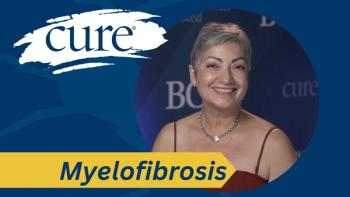
Robotic Liver Surgery Leads to Shorter Hospital Stays, Quicker Recovery
Patients can discuss minimally invasive robotic liver cancer surgery with their care teams. The process tends to be safe and effective, an expert said.
With the advent of new technologies and improved surgical techniques, patients with cancer in their liver may be able to undergo a robotic minimally invasive surgery and be sent home within a day of the procedure.
“There are some operations on the liver where we’re not removing much of the liver because of where the tumors are placed. We used to have to make giant incisions to get to those tumors,” Dr. Yuman Fong, Sangiacomo Family Chair in Surgical Oncology and director of the Center for Surgical Innovation at City of Hope, said in an interview with CURE®.
However, now doctors can use robotic techniques that result in smaller incisions and therefore potentially quicker recovery time.
“With a robot, we can now reach around the corner, see around the corner, cut safely [and] extract these tumors very nicely through very small incisions. Suddenly rather than [the patient] being laid up by their giant incision [they are] now getting right up out of bed a couple of hours later,” he said.
Fong and colleagues recently analyzed outcomes for 307 patients across six treatment institutions, who underwent outpatient robotic hepatectomy (surgical removal of part of the liver). Among the 307 patients, 268 had cancer: 33 had liver cancer, 27 biliary cancer and 208 had cancer that started elsewhere in the body and spread to the liver.
Findings showed that no patients died from the procedure. Twenty-six patients were able to leave the hospital the same day, while 281 stayed only one night.
Fong said that when he started his medical career in 1984, surgery for liver cancer came with long hospital stays and a much higher death rate.
“Back then if you had primary liver cancer — that’s cancer that started inside the liver — approximately 10% of patients died from surgery,” he said. “Everybody was sent to the [intensive care unit] and would stay in the hospital for two to three weeks. We wouldn’t even get patients out of bed for four or five days.”
However, with smaller incisions, Fong explained that people can be up and moving, eating normally and returning home soon after their surgery. Not to mention, getting patients out of the hospital could decrease their risk of catching an infection there, according to Fong.
In the study, a total of six patients experienced complications after surgery (wound infection requiring antibiotics; abscess requiring readmission and drainage; and malnourishment).
Deciding on Robotic Liver Surgery
Fong explained that surgeries that are incision-dominant — meaning that the incision, itself is what would be driving a longer hospital stay, rather than the resection of a large portion of the liver — may be good candidates for the minimally invasive robotic option.
“When we take out a small piece of the liver … patients actually recover very quickly. Therefore, if we can do that, and do it without making a giant incision, most of the patients bounce back so fast that we think it’s safe for them to be up and about and possibly home on the same or the next day,” Fong said.
Additionally, since patients are likely to return home sooner after robotic surgery, Fong emphasized the importance of patients having support at home during their recovery.
Despite the advantages of robotic liver surgery, Fong advised patients against looking specifically for a treatment center that does robotic surgeries. Instead, they should seek out an experienced surgeon in a place of expertise, he said.
“Patients will find experienced live surgeons who will also do robotic surgery and can help decide what is the right incision for their operation,” Fong said.
For more news on cancer updates, research and education, don’t forget to




